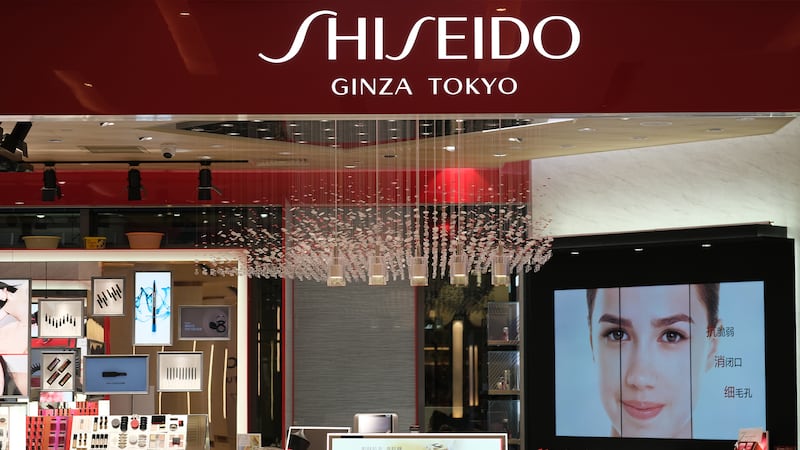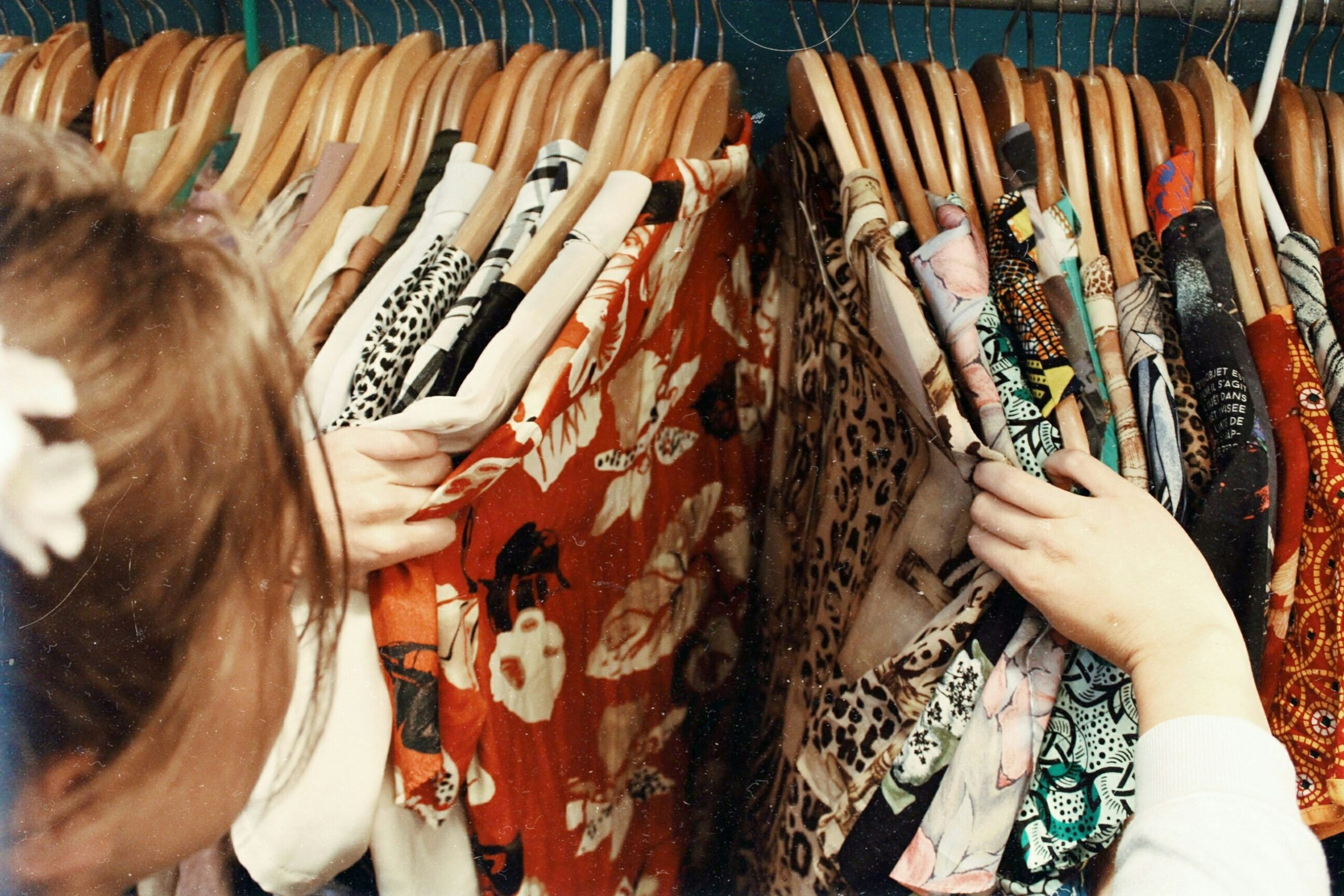Last Sunday, Nike aired its first Super Bowl ad in more than two decades, to a record viewership of 127.7 million for the big game.
Called “So Win,” it featured several of sport’s most exciting athletes — who happened to all be women. The black-and-white TV spot, featuring stars like gymnast Jordan Chiles, basketball players A’ja Wilson and Caitlin Clark, and sprinter Sha’Carri Richardson, started with all the things women are told they can’t do, and then told them to do it anyway. The subtext was clear: “Just do it.”
The Super Bowl spot was just one of the notable marketing moments in fashion this week — some smash hits and others more lacklustre. The brands that did manage to stand out were those that displayed a move back towards the core brand identity they’re best known for after losing themselves in recent years.
Nike’s ad felt like vintage Nike, and came as the brand works to reassert its identity following its swerve off course in both its product and marketing. It’s again focusing on performance and new innovations in sports like running after over-distributing its most iconic sneakers, hurting their cool factor, and getting back to the brash, brand-led campaigns that helped build its image after leaning too far toward digital performance ads.
Burberry, too, took a page from its past with its latest campaign. Featuring a slew of English stars, including Kate Winslet, Richard E. Grant and Naomi Campbell, the ads spotlighted the brand’s core outerwear staples, like the trench coat and an umbrella in its signature plaid, leaning on pieces that feel distinctly “Burberry” to audiences. These were worn across scenes that would fit right into a British rom-com, complete with a downpour to support the evergreen message that “it’s always Burberry weather.” The campaign is reminiscent of the brand’s heyday under Christopher Bailey, when it leaned into its British heritage and also featured rain showers at the end of the designer’s shows in Hyde Park.
It comes on the heels of the brand’s winter campaign, which supported the same message, and is part of a broader approach of getting closer to what Burberry has historically been known for — while communicating it in ways that are engaging for a modern audience, like the film-focused campaigns. The change is reflective of the company’s need to rebound after several years of subpar sales due to overtly fashion-forward collections that felt too distant from its core offering and history.
These moves towards embracing a brand’s heritage could serve as a road map for Gucci, which reported a 24 percent dip in sales in the fourth quarter this week following the news that creative director Sabato De Sarno would depart the brand earlier this month.
While De Sarno’s collections offered a more sleek and minimal take on the Italian megabrand, the clothing and campaigns — most recently, subdued Valentine’s Day ads featuring real couples — failed to excite a consumer base that’s grown to expect more out-of-the-box creativity from the brand thanks to the tenures of previous creative directors Tom Ford and Alessandro Michele.
While Gucci’s future remains uncertain until it announces its next creative director, no matter who takes the job, the brand will need to get crystal-clear on its positioning. Providing customers with the creativity they expect from the brand will be crucial to course correct — especially as the market calls for a marquee name as Gucci’s new creative director, who can build confidence that the brand can once again set the fashion agenda.
At a generally uncertain moment in time — politically and otherwise — brands need to clearly communicate who they are, but they also need to understand who they are and what consumers want from them. Striking the right balance between heritage and innovation will be crucial for brands to clarify their narrative among overwhelmed customers.
THE NEWS IN BRIEF
FASHION, BUSINESS AND THE ECONOMY

Kering reports sales decline. Gucci’s sales plunged 24 percent in the fourth-quarter. Sales continued to decline at Saint Laurent (down 8 percent) and the division which houses Balenciaga and McQueen (down 4 percent). The French group announced that overall sales fell 12 percent in the quarter and that it would shutter 50 stores to adapt to a slower market.
Hermès sales accelerate, raising hopes for China turnaround. The leather goods powerhouse reported revenue up 18 percent at year-end. Sales picked up in China, whose sluggish economy has weighed on luxury brands. ‘We see positive signs, but not enough to definitively call it a turnaround,’ chief executive Axel Dumas said.
Moncler shares surge, boosted by recovery in China. Moncler Group’s full-year revenues rose 7 percent to €3.11 billion ($3.42 billion). In the fourth quarter revenues rose 8 percent, boosted by double-digit growth in mainland China for the Moncler brand and “improving trends” at Stone Island.
Mytheresa’s profit soars ahead of YNAP acquisition. The German luxury e-tailer’s sales grew 13 percent to €223 million ($230 million) in the second quarter of its fiscal year that ended in December. It also maintained strength in Europe and the US, where sales grew 18 percent and 13 percent, respectively.
Hermès responds to ‘Walmart Birkin’ and dupe culture. CEO Axel Dumas called fakes “detestable” while acknowledging the grey area surrounding many copycat products. “Of course I was mad,” he added.
Steve Madden to buy UK shoe brand Kurt Geiger for $360 million. Long Island-based Steve Madden has signed a deal to buy the shoe designer from an investor group led by private equity firm Cinven. The transaction is expected to close in the second quarter, subject to regulatory clearance.
Bluestar Alliance acquires Palm Angels. The brand founder, Francesco Ragazzi, will depart the brand he established in Milan in 2015. Bluestar Alliance plans to support Palm Angels as it expands its global footprint.
Adidas launches a new premium line, A-Type. The line reimagines classic Adidas items in premium fabrications. Pieces in the first collection include Adidas’ Firebird tracksuit, Sprinter shorts and Airliner bag reworked in leather and produced by European ateliers.
Crocs Inc. sales rise thanks to China and North America. The footwear company announced Thursday that its revenue grew 4 percent year over year to $4.1 billion in 2024. Sales at its Crocs brand rose 4.1 percent in the fourth quarter compared to the prior year, while sales at HeyDude, the casual loafer brand it acquired in 2022, were flat.
Shopify drops as cash flow guidance disappoints to start 2025. Shopify’s operating income for 2024 was $1.1 billion, compared with an operating loss of $1.4 billion the year prior. Gross merchandise volume, the overall value of merchant sales across Shopify’s systems, was $94.5 billion, beating Wall Street projections of $93 billion.
US clothing prices fall in January. Prices fell 1.4 percent from the preceding month, according to data by the US Bureau of Labor Statistics. The dip came despite an overall increase of 0.5 percent across all items in the consumer price index.
Shein asks some Chinese suppliers to diversify to Vietnam. The ultra-fast-fashion retailer is incentivising the moves with higher procurement prices of as much as 30 percent. Adding supply outside of China will allow Shein to avoid President Donald Trump’s punitive policy on goods coming from the world’s second-largest economy.
Ye’s Shopify store was removed after selling swastika shirts. The musician and designer ran a commercial during the Super Bowl telling people to visit his site which featured a white shirt with a black Nazi swastika in its centre. “All merchants are responsible for following the rules of our platform,” Shopify said.
THE BUSINESS OF BEAUTY

Shiseido profits plummet 73 percent on weak China demand. Shiseido said its operating profit came in at 7.58 billion yen ($49.9 million) in the 12-month period ended Dec. 31, compared with 28.13 billion yen the prior year. The slump was partly due to a drop in consumer spending in key overseas market China, a trend the company expects to continue into 2025.
Unilever to acquire refillable personal care brand Wild. The personal care conglomerate acquired the label founded in 2019 by Charlie Bowes-Lyon and Freddie Ward for £230 million ($286 million). The business generated sales of almost £47 million ($58 million) in 2023, a 77 percent increase on the prior year, according to company filings.
Australian beauty e-tailer to open 25 stores by 2028. At Adore Beauty’s first location, in Melbourne’s Westfield Southland mall, shelves of cosmetics, fragrance, skin, hair and body care are interspersed with screens displaying product information or online exclusives. A second Melbourne location will open in early March.
Dr. Bronner’s ditches widely used ‘B Corp’ sustainability certification for ‘weak’ rules. The Vista, California-based brand won’t renew its B Corp certification when it expires in September after years of lobbying B Lab, the nonprofit behind the programme, for more stringent requirements, according to a statement Tuesday
PEOPLE

Miu Miu names Silvia Onofri as CEO. Onofri, who was formerly the president of VF Corp.’s Napapijri, succeeds Benedetta Petruzzo. While Miuccia Prada remains the label’s creative director, a key deputy — design director Dario Vitale — recently exited the brand. Vitale is headed for a key role at Versace, industry sources said.
Richemont elevates jewellery bosses in fresh executive shakeup. The luxury conglomerate promoted Catherine Renier, who runs the Van Cleef & Arpels jewellery brand, and Cartier chief executive Louis Ferla to Richemont’s senior executive committee.
Michael Rider to make Celine debut on July 6. Rider, a key design deputy during Celine’s Phoebe Philo era who later oversaw womenswear for Polo Ralph Lauren, replaced star designer Hedi Slimane in October. His debut will see the brand return to the runway on the eve of Paris couture week.
L’Oréal US appoints new head of acquisitions. Ali Goldstein was previously US president for L’Oréal Paris, and has also held leadership roles for Maybelline and Garnier. In her new role, Goldstein will help identify American beauty brands for investment or purchase across L’Oréal’s mass, luxury, dermatological and professional divisions.
MEDIA AND TECHNOLOGY

Apple, Google restore TikTok app after assurances from Trump. The two companies had removed TikTok in the US last month to comply with a law passed in 2024. The move followed assurances in a letter from US Attorney General Pam Bondi that a ban wouldn’t immediately be enforced.
Compiled by Yola Mzizi.



.jpg?tr=w-780%2Cfo-auto&w=150&resize=150,150&ssl=1)




